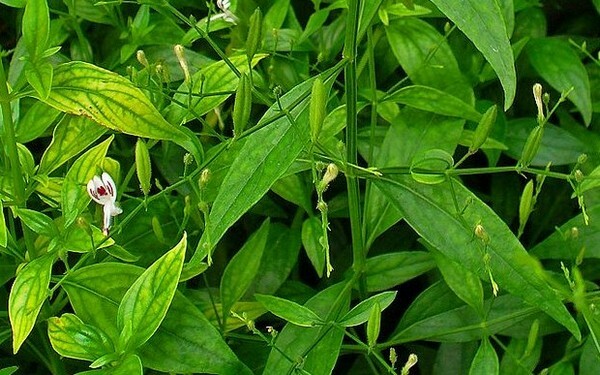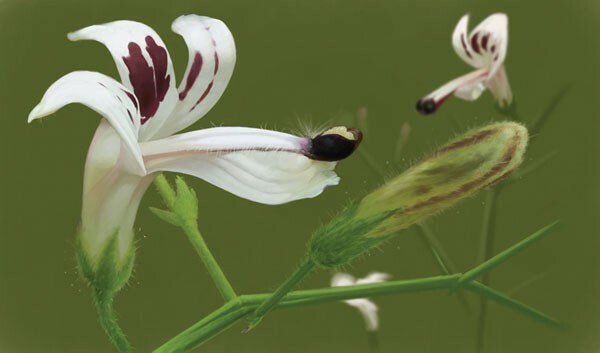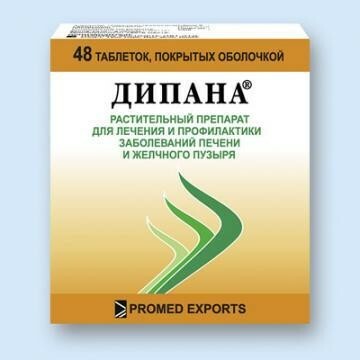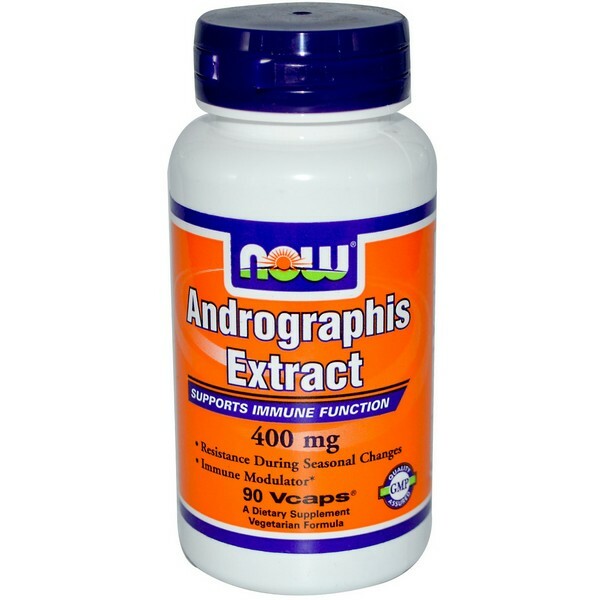- Botanical Description
- Chemical Composition
- Therapeutic Properties
- Raw Material Preparation
- Methods of Application
- Precautions
Andrographis paniculate is a herbaceous plant representative of the Acanthus family. In natural conditions it grows in India, Sri Lanka, Indonesia, Malaysia, China, Thailand and other countries of East Asia, occurs in the Americas. For more than 100 years, andrografis has been used as a medicinal plant in many Asian countries. It is used for liver pathologies, gastrointestinal organs, colds, inflammatory processes in the upper respiratory tract, various infectious diseases, and for general strengthening of the body. In the past 10 years, andrografis has gained popularity in America and Europe as an effective tool for preventing seasonal flu and cold epidemics. Due to the bitter taste of the leaves and other features, the plant received the names: king of bitterness( calmeg), bile of earth, Indian echinacea, king of tinctures. In China it is called "kang-yang".
Botanical description
Andrografis panicle is a perennial plant that can reach a height of 40 - 110 cm. It grows mainly in shady and damp places, it is easy to multiply by seeds, in natural conditions, self-seeding is possible.
The stem is thin, branching, erect, square in cross section. It is colored dark green and has longitudinal grooves. The structure of the stem is rather fragile, easily breaks.
The opposite side of the sheet. Leaves simple, narrow, lanceolate, without pubescence, located on short petioles. On top of them are dark green color, from below - gray-green. The tops of the leaves are pointed, the bases are wedge-shaped, the edges are one-piece. The length of the leaf blade varies from 2 to 12 cm, and the width is 1-3 cm.

Blooms andrographis paniculate from September to October. Flowers of small size( 1 - 3 cm in length), have a white color with small pink and purple specks. The axillary or apical brushes are collected in the inflorescence. Flowers in the inflorescence are on a short pedicel. The calyx consists of 5 small linear sepals, on the outside is covered with glandular hairs. Corolla bilobiate: upper lip 2-lobed, lower - 3-lobed( located vertically).

Fruits appear in October-November. They are thin linear-oblong capsules up to 2 cm in size, containing many small, flattened, yellow-brown seeds with grooves.
Chemical Composition
The chemical composition of andrographic panicle, as well as its properties, has been actively studied by many scientists over the last time. The following compounds were found in it:
- flavonoids( 7-O-methylgovine, androgrographine C, trihydroxiflavone, etc.);
- flavonoid glycosides;
- diterpenoids( more than 20 compounds, the main ones of which are andrographolide, deoxyandrographolide, paniculide, neoandrographolide, andropanoside and deoxyhydrohydroandrographide);
- polysaccharides;
- arabinogalactan proteins;
- polyphenols;
- of potassium salt.
All the medicinal properties of andrographs are mainly associated with the presence of flavonoids and andragrapholides in its composition, the content of the latter in leaves can vary from 0.5 to 6%.
Interesting: The characteristic bitterness of the plant is due to the presence in its composition of an extremely bitter substance - diterpene lactone andrographolide and its derivatives.
Therapeutic properties of
Andrografis paniculate has a wide spectrum of biological activity and is used in the treatment of various diseases. The agents on its basis have the following effect on the human body:
- immunostimulating;
- antiviral;
- antibacterial;
- is an antifungal;
- is an anti-inflammatory;
- is antipyretic;
- antioxidant;
- hepatoprotective;
- choleretic.
Treatment of infectious diseases
Andrograms funds are widely used in folk medicine for the treatment of colds, flu, angina, inflammatory diseases of the respiratory tract( laryngitis, sinusitis, pharyngitis, tonsillitis, bronchitis), bronchial asthma. They facilitate cough relief, dilute sputum, eliminate dryness in the throat, reduce nasal congestion, and have antipyretic effect. Andrografis has a general strengthening and immunostimulating effect, affecting specific and nonspecific immunity, helps the body to cope with the disease and reduces the risk of complications.
The plant is considered a natural antibiotic, which, unlike the traditionally used antibacterial drugs, does not have as many side effects and contraindications. It increases in the body the production of specific antibodies to various pathogenic bacteria( Staphylococcus aureus, Borrelia, Pseudomonas aeruginosa, Escherichia coli, Salmonella, Shigella, etc.), including mycobacteria that cause tuberculosis. When using andrographs for the treatment of infectious diseases of the intestine, it has a selective antibacterial effect, suppressing the development of pathogenic bacteria only and without affecting the normal beneficial microflora.
The antiviral activity of the plant is realized by stimulating the production of interferon and inhibiting the viral glycoproteins that make up the envelope of the virus, which prevents the penetration of viral particles into host cells and their further reproduction in the human body. The high efficacy of andrographs against influenza viruses and herpes simplex has been established.
It is interesting: It is believed that the use of andrographis of the panicle facilitated the stopping in India of a terrible epidemic of the Spanish flu( 1918-1919), which claimed the lives of tens of millions of people around the world.
Andrografis is effective not only for the treatment of influenza and colds, but also for their prevention. According to the studies, it was found that when taking a dietary supplement based on it for two months, the risk of the incidence of respiratory infections is reduced by 70%.
Hepatoprotective properties of
Andrografis is used in liver diseases, as it has pronounced hepatoprotective properties. Herb extract is a part of some preparations( Dipan, Gepofil, Triliv, Gepana), prescribed in medical practice with such liver problems as:
- chronic intoxications, including alcoholic ones;
- fatty degeneration;
- cirrhosis;
- hepatitis;
- chronic and acute inflammatory processes.

Andrografis protects the liver from the negative effects of alcohol, chemicals, various toxins. It increases the activity of transferase enzymes that take part in the second phase of xenobiotic detoxification in the liver. In the resultant conversions, the compounds reduce toxicity to the body and increase solubility in water, which facilitates their elimination.
Antitumor activity of
Andrographis paniculate is able to slow the growth and development of cancer cells. The plant extract can be used as part of complex therapy for breast, skin, prostate, stomach, and non-Hodgkin's lymphomas. It has a cytotoxic effect on tumor cells comparable in strength to Cisplatin and Tamoxifen, causing them to respond to growth restriction signals, leading to differentiation and subsequent apoptosis. As a result, the process of uncontrolled reproduction of cancer cells and the formation of metastases are stopped.
An important difference between andrografics from the antitumor drugs used is low toxicity in relation to other cells of the body. When the plant is used together with the cytostatic and cytotoxic drugs traditionally used, their effectiveness is marked, as well as the protective effect on vital organs( liver, kidneys, immune system organs).Under the influence of andrographs, there is an increase in the cytotoxic activity of leukocytes against cancer cells.
Other therapeutic properties of andrographs
Andrografis paniculate is used for certain diseases of the digestive system. It helps with dysbacteriosis, ulcerative colitis, intestinal colic, irritable bowel syndrome, ascariasis. Means from the plant have a choleretic effect, improve digestion and increase appetite.
Often decoctions of andrografis are used for rinses, baths and lotions for burns, inflammations in the oral cavity( gingivitis, stomatitis, periodontitis), ulcers, carbuncles, furuncles, eczema, psoriasis, bacterial and fungal skin lesions.
Interestingly: Andrografis paniculate is used in cosmetology. It is a part of cleansing antiseptic lotions for oily and sensitive skin, scrubs from acne, soothing masks and creams.
Procurement of raw materials
Dried leaves and andrographic roots are used as a medicinal raw material. The leaves are cut before the flowering period begins, then they are laid out in a thin layer and dried in fresh air under a canopy or in a room with good natural ventilation. The roots are excavated after flowering. They are cleaned of residues of soil and foreign impurities, washed and dried.
In medical practice, the extract of andrographic leaves is most often used. It is obtained by extraction of dry raw materials with water and alcohol. It is a greenish powder with a bitter taste and herbal odor.
Ways of using
You can prepare a decoction, infusion, tea from the dried medicinal raw material of andrographis panicle and its extract. Dry extract is used for 1 - 2 tsp.once or twice a day( the daily dose should be 2-6 g), stirring in warm milk or water. It is recommended to take courses for 2 to 4 weeks, and then take a break for the same time.
The extract of andrographis panicles leaves is produced by many manufacturers( Now Foods, Planetary Herbals, Nature's Way) in the form of capsules or tablets. The content of andrographolides in such food additives is usually 10%.

Precautions
The list of contraindications for andrografics is very small. Means from it can not be taken with individual intolerance or allergy to the plant, as well as children under 6 years of age, pregnant and lactating women, people prone to hypotension.
Of adverse reactions, it rarely shows nausea, headache, diarrhea, fatigue, drowsiness.
Important: Before using folk remedies for andrography of panicle, food additives or medications on its basis, you should consult your doctor.
Appearance of andrographis panicle:
